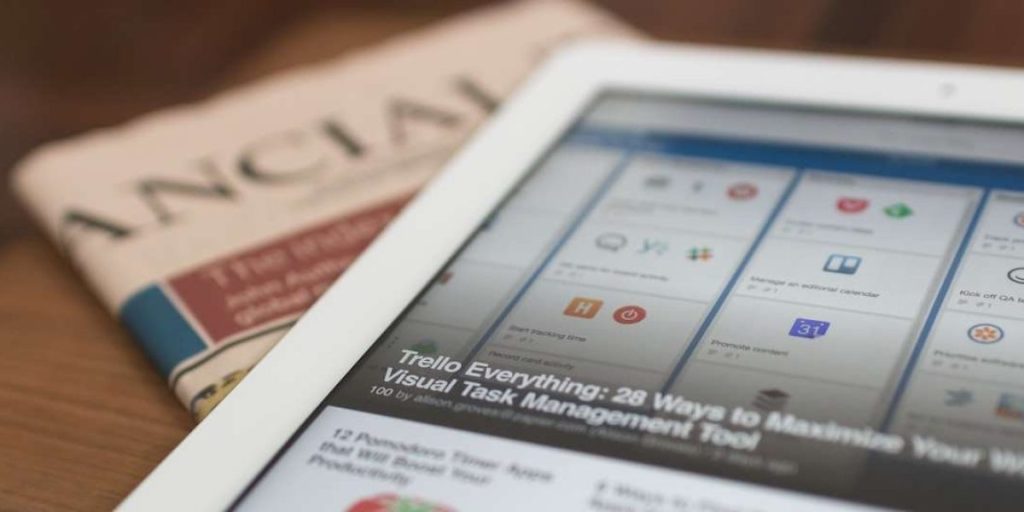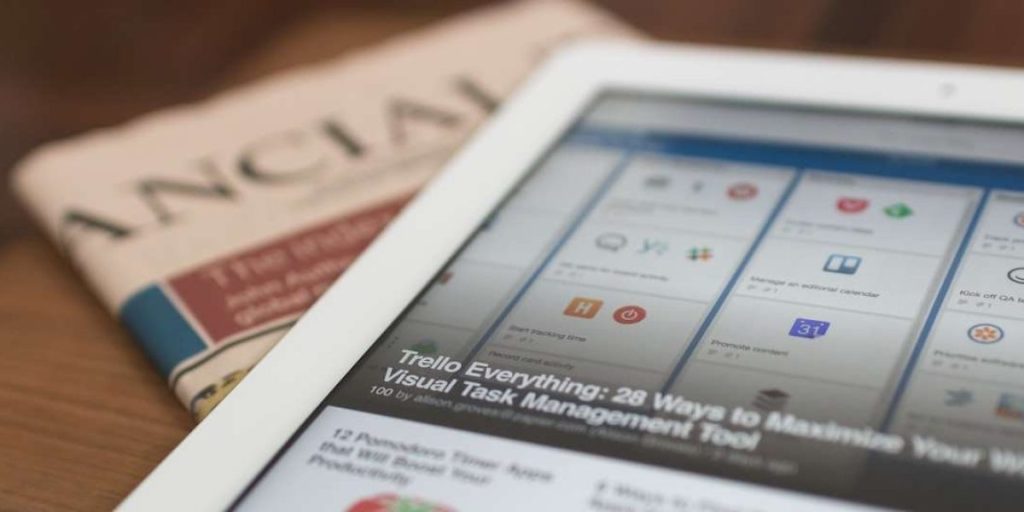
Table of Contents
Tips for Using Financial Tools Effectively
Tips for Using Financial Tools Effectively: Managing money in today’s world is no longer about paper ledgers, handwritten budgets, or guesswork. With a wide range of financial tools available—budgeting apps, expense trackers, investment platforms, and AI-driven personal finance assistants—you can gain clarity over your money like never before. But here’s the catch: having access to financial tools doesn’t guarantee success. The real challenge lies in knowing how to use these tools effectively.
Many people download apps, sign up for services, or create accounts with good intentions but fail to maximize their potential. They either abandon the tool after a few weeks, use it inconsistently, or rely on it without truly understanding the insights it provides. The result? Frustration, wasted effort, and missed opportunities to improve financial health.
This guide dives deep into practical tips for using financial tools effectively, helping you transform them from passive apps into powerful drivers of your financial goals.

Understanding the Role of Financial Tools
Before exploring tips, it’s important to understand the role financial tools play in money management. At their core, these tools are designed to simplify financial decisions, track progress, and provide clarity. They can help with:
- Budgeting: Tracking income, expenses, and categories to prevent overspending.
- Saving: Automating transfers to savings accounts or goals.
- Investing: Analyzing portfolios, monitoring performance, and reducing risk.
- Debt Management: Consolidating balances and creating repayment strategies.
- Financial Planning: Helping visualize short- and long-term goals.
Think of financial tools as guides. They provide data and insights, but the responsibility to act on them lies with you.
Tip 1: Choose the Right Tool for Your Needs
Not every financial tool will suit your lifestyle. Some people prefer simple expense trackers, while others need advanced investment dashboards. Start by asking yourself:
- Do I need help with budgeting or investing?
- Do I want automation or manual control?
- Am I comfortable with mobile apps, or do I prefer web-based dashboards?
- How detailed do I want my financial data to be?
Choosing a tool that aligns with your goals and comfort level increases the chances you’ll actually use it consistently.
Tip 2: Keep It Simple at First
One mistake many people make is overwhelming themselves with too many tools at once. Downloading three budgeting apps, two investment trackers, and a debt calculator is counterproductive. Instead, pick one or two tools to start. Get comfortable with them before exploring others.
For instance, start with a budgeting app to track daily spending. Once that becomes routine, add an investment platform or savings goal tracker.

Tip 3: Automate Where Possible
Financial tools shine when they reduce manual effort. Many allow automation for:
- Categorizing transactions.
- Setting recurring transfers to savings or debt payments.
- Sending alerts when bills are due.
- Investing small amounts regularly (micro-investing).
By automating, you reduce human error and make financial progress without constant effort.
Tip 4: Customize Categories and Goals
Most financial tools come with default categories like groceries, dining, transportation, and entertainment. While helpful, they may not fully reflect your life. Customize categories to align with your lifestyle—for example, “kids’ education,” “fitness,” or “side hustle expenses.”
Similarly, set goals that matter to you. A generic “Save $1,000” goal is less motivating than “Save $1,000 for Bali trip.”
Tip 5: Review Data Consistently
The true power of financial tools lies in reviewing the data they provide. Schedule time—weekly or monthly—to look at:
- Spending patterns.
- Savings progress.
- Net worth growth.
- Investment performance.
Consistent reviews help you stay on track and adjust before small issues become big problems.
Tip 6: Don’t Ignore Notifications
Many tools send reminders about bills, budget overspending, or unusual transactions. Instead of ignoring these alerts, treat them as nudges. They’re designed to keep you accountable and prevent mistakes like late fees or overdraft charges.
Tip 7: Sync Accounts Securely
Linking your bank accounts, credit cards, and investments to financial tools ensures real-time tracking. This gives you an accurate picture of your financial health. Always ensure the tool uses strong security features like encryption and two-factor authentication before syncing sensitive information.

Tip 8: Separate Needs from Wants
Financial tools often show charts and pie graphs of spending. Use them to distinguish between needs (rent, utilities, groceries) and wants (luxuries, subscriptions, dining out). Over time, this awareness helps you make conscious choices without feeling deprived.
Tip 9: Use Tools to Build Habits, Not Just Numbers
Numbers alone don’t change behavior—habits do. Financial tools can help you:
- Spot spending triggers (like eating out after stressful workdays).
- Reinforce good habits (such as saving automatically on payday).
- Break bad patterns (like overspending on subscriptions you don’t use).
Approach the tool as a habit-building partner, not just a calculator.
Tip 10: Involve Your Family or Partner
If you share finances, involve your partner or family in using the tools. Many apps offer multi-user access. Transparency ensures everyone is on the same page, reduces conflicts, and makes budgeting or saving goals a team effort.
Tip 11: Don’t Rely on Tools Alone
While financial tools are powerful, they’re not perfect. Algorithms may misclassify expenses, or investment platforms might give generalized advice. Use the data as a guide, but pair it with critical thinking and financial literacy.
Tip 12: Upgrade When Needed
Free tools are great, but premium versions often offer advanced features like deeper analytics, financial coaching, or customized reports. If you find value in a tool and feel it supports your goals, consider upgrading—it’s often a worthwhile investment.
Tip 13: Keep Security in Mind
Financial tools deal with sensitive data. Protect yourself by:
- Using strong, unique passwords.
- Enabling two-factor authentication.
- Avoiding public Wi-Fi when accessing accounts.
- Checking reviews before trusting a new app.
Your financial progress is only valuable if it’s safe.
Tip 14: Compare Progress Over Time
Don’t just look at monthly snapshots—use your financial tools to track year-over-year progress. Are you saving more than last year? Is your net worth increasing? Are you closer to your investment goals? Long-term trends give you motivation to stay consistent.
Tip 15: Integrate Multiple Tools Strategically
As you grow financially, you may need more than one tool. For example:
- A budgeting app for everyday spending.
- An investment tracker for your portfolio.
- A savings tool for long-term goals.
Use each tool for its strength, but avoid overlap that creates confusion.
Tip 16: Set Realistic Goals
Don’t set impossible goals that the tool will constantly show as “failing.” Instead, start small. Save $100 a month, then increase to $200. Pay off one small debt, then tackle a bigger one. Realistic goals keep you motivated and prevent discouragement.
Tip 17: Take Advantage of Educational Features
Many financial tools include blogs, tutorials, or financial literacy resources. Use them! They can help you understand your data better and make smarter decisions.
Tip 18: Track Hidden Expenses
Financial tools often reveal expenses you might overlook, like streaming subscriptions, small fees, or unnecessary upgrades. Regularly scan for hidden expenses you can cut to free up money for more meaningful goals.
Tip 19: Revisit and Adjust Goals
Your financial life will change—new jobs, kids, debt payoff, or retirement planning. Don’t keep the same goals forever. Update your tools to reflect new priorities, ensuring they continue to serve you effectively.
Tip 20: Use Tools for Motivation, Not Pressure
Financial tools should inspire progress, not cause stress. If you feel anxious about every notification or graph, adjust how you use the tool. Focus on small wins and steady progress rather than perfection.
The Human Side of Financial Tools
At the end of the day, financial tools are just that—tools. They’re meant to empower you, not control you. What matters most is how you use them to align money with your values and goals. Think of them as companions on your financial journey. They’ll give you data, insights, and reminders, but the real change comes from your actions and mindset.
Final Thoughts
Using financial tools effectively isn’t about downloading the latest trending app or signing up for every financial dashboard you can find. It’s about:
- Choosing the right tools for your needs.
- Automating wisely to save time and effort.
- Reviewing data regularly to stay on track.
- Adjusting goals as your life evolves.
- Building habits that last beyond the app itself.
By following these tips, you’ll transform financial tools from digital clutter into powerful allies for building wealth, reducing stress, and creating a balanced lifestyle.
With the right approach, these tools don’t just track your money—they help you take control of your future.
Also visit:-
10 Simple Ways to Bring Romance Back into Your Marriage
FAQs on Tips for Using Financial Tools Effectively
1. What are financial tools?
Financial tools are apps, software, or platforms that help manage money by tracking spending, budgeting, saving, investing, or paying off debt.
2. Why should I use financial tools?
They simplify money management, save time, reduce errors, and provide insights that help you make smarter financial decisions.
3. Are financial tools suitable for beginners?
Yes. Many apps are designed with simple interfaces that beginners can use to track expenses and start budgeting.
4. What is the best financial tool for budgeting?
The best tool depends on your needs, but apps with customizable categories, automation, and reporting features are ideal for budgeting.
5. Can financial tools help me save money?
Yes. Many tools automate savings, round up purchases, or create savings goals to help you set aside money consistently.
6. Do financial tools track all expenses automatically?
If you link your bank accounts or cards, many tools automatically categorize expenses. Otherwise, you may need to add them manually.
7. Are financial tools safe to use?
Most reputable financial tools use encryption and two-factor authentication to protect your data. Always check security features before using one.
8. Can I manage debt with financial tools?
Yes. Some tools let you track debts, calculate payoff timelines, and even suggest repayment strategies.
9. What financial tools help with investing?
Investment apps and platforms provide portfolio tracking, real-time data, and risk analysis to help you make informed decisions.
10. Should I pay for premium financial tools?
If advanced features like detailed analytics, financial coaching, or investment insights add value, a paid plan may be worth it.
11. How often should I check financial tools?
Weekly check-ins are great for budgeting, while monthly reviews work well for long-term tracking.
12. Do financial tools replace financial advisors?
No. Tools provide data and guidance, but advisors offer personalized strategies based on your unique situation.
13. Can financial tools reduce financial stress?
Yes. By organizing your finances and giving you a clear picture, they reduce uncertainty and stress.
14. Do financial tools work for families?
Yes. Many apps allow multiple users, making it easier for families or couples to manage money together.
15. Can I use financial tools offline?
Some tools allow manual entry offline, but most require internet access for real-time updates.
16. Are financial tools expensive?
Many are free or offer basic plans at no cost. Premium versions may charge a monthly or yearly fee.
17. How do I choose the right financial tool?
Define your goals—budgeting, saving, investing, or debt repayment—and choose a tool that matches those needs.
18. Can financial tools help me avoid overspending?
Yes. Budgeting apps often send alerts when you approach or exceed your budget.
19. Do financial tools support multiple currencies?
Some do, especially global investment and budgeting apps. Always check this feature if you deal with international finances.
20. What’s the role of automation in financial tools?
Automation reduces manual effort by categorizing transactions, saving money, or scheduling bill payments.
21. Do financial tools provide financial education?
Yes. Many include tutorials, blogs, and tips to help you understand money management better.
22. Can I track side hustle income with financial tools?
Yes. Most apps allow you to add multiple income streams for accurate tracking.
23. How secure is linking my bank account to a financial tool?
It’s generally safe if the app uses encryption and is trusted, but always research before connecting accounts.
24. What if my expenses don’t fit into default categories?
You can usually customize categories to better reflect your personal spending habits.
25. Are financial tools helpful for students?
Yes. Students can use them to manage allowances, student loans, and part-time job income.
26. Do financial tools help track hidden expenses?
Yes. They often highlight overlooked costs like subscriptions or small recurring charges.
27. Can financial tools track long-term goals?
Absolutely. Many let you set savings or investment goals and track progress over months or years.
28. Do financial tools require technical skills?
No. Most apps are user-friendly and designed for people with little or no technical knowledge.
29. How can financial tools improve spending habits?
By showing spending patterns and trends, they help you identify wasteful expenses and adjust behavior.
30. Can financial tools integrate with other apps?
Some can sync with calendars, spreadsheets, or investment platforms for seamless tracking.
31. Do financial tools help with retirement planning?
Yes. Some offer retirement calculators and track contributions to savings or investment accounts.
32. Can financial tools work across devices?
Most modern apps sync across phones, tablets, and desktops, making access easy anywhere.
33. How do financial tools motivate users?
They use visuals like charts, progress bars, and notifications to encourage consistency.
34. Are financial tools customizable?
Yes. You can adjust budgets, categories, and goals to fit your lifestyle.
35. Do financial tools require constant input?
Not always. Many apps automate tracking once accounts are linked, reducing manual effort.
36. Can financial tools prepare reports?
Yes. They often generate monthly or annual financial summaries for easy review.
37. Are financial tools useful for small business owners?
Yes. Entrepreneurs can use them to track expenses, manage cash flow, and separate business from personal finances.
38. Do financial tools help build credit?
Indirectly, yes. By managing bills and debt effectively, they can improve your credit score.
39. Can financial tools replace spreadsheets?
For many users, yes. They offer easier automation and better insights compared to manual spreadsheets.
40. What’s the biggest mistake when using financial tools?
The biggest mistake is downloading them but not using them consistently. Commitment is key to seeing results.
Also visit:-



